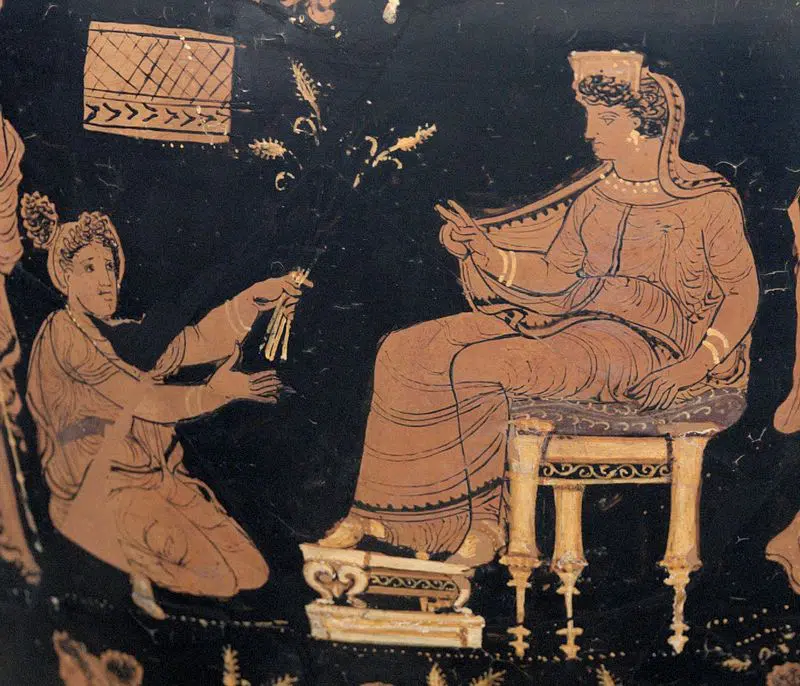
Kykeon, the mysterious drink from the past linked to the Eleusinian Mysteries, is a drink few know of and of which even fewer speak or write about.
By Giorgio Pintzas Monzani
It was an essential part of a ritual that took place during the practice of an ancient liturgy linked to the world of the Greek gods and their veneration.
The preparation was full of symbolic connections, but with modern medical and scientific analysis we can begin to understand the true nature of this recipe.
Let’s go back again over the centuries to see what the myths can teach us and what science can explain to us about Kykeon.
The beverage in question played a very important role during the Eleusinian Mysteries, being the only food allowed during the period of fasting observed by the believers for the course of these annual religious rites.
The Eleusinian Mysteries
The Eleusinian Mysteries represented the most important ritual in the religious realm of the ancient Greek world.
According to historical hypotheses, they began around 1700 to 1500 B.C. in Eleusis, a small town outside Athens, and they were practiced until the fourth century A.D.
During the mysteries, the faithful honored the divine figure of the goddess Demeter; all the ceremonies took place around the temple of the goddess herself, which was located in Eleusis.
The figure of Demeter was flanked by her daughter Persephone, who according to mythology, was kidnapped by the god of the underworld, Hades. The gods, in a pact with the deity of the underworld, decided to allow Persephone to return to the face of the Earth for six months a year alongside her mother Demeter before she would be forced to return again to the world of the dead for the remainder of the year.
This myth leads to the ancient explanation of the change of seasons and of the succession of the periods of flowering in the spring and summer with those of dormancy in the winter.
For this reason, according to Homer, the Eleusinian Mysteries were created to honor Demeter and Persephone as symbols of fertility, flowering, and the cyclical birth of life.
The sacred fast and the Kykeon
During the ritual period, which was approximately twenty-one days, the faithful who were being initiated to the cult of the goddess were subjected to a fast in honor of Demeter.
One of the few foods allowed during this time was the Kykeon. Etymologically, the Greek meaning is that of “mixed together,” or homogeneous; however, in fact, the final product was never a single substance but a set of ingredients.
Its preparation was extremely simple. It was made of water, rye flour, and Roman mint (γληχων).
According to some hypotheses, instead of water, wine was actually used; however, this would go against the principles of morality which was imposed on the followers of Demeter during the mysteries.
Mystical Visions
There were many experiences of visions and apparitions during the Eleusinian Mysteries, during which it was thought that one could have direct contact with the world beyond and with the deities being celebrated.
Today the truth is perhaps even more fascinating, and it brings us back exactly to the gastronomical symbol of those rites, Kykeon, but even more specifically to one of its ingredients, rye flour.
The scanty scientific knowledge of ancient times led to ignorance about the presence of a fungus which, even today, is characteristic of rye crops: ergot.
Today, the presence of ergot is easily recognized and avoided, in part thanks to the fact that contaminated grains have dark-colored spikes which represent the fruiting parts of the fungus. Precisely because of this visual characteristic today, we know the diseased plants as “horned rye.”
So how did ergot make the drink so powerful?
Scientific study has identified alkaloids in the fungus that interact with the serotonin receptors in our brains.
Additionally, we know that the ergot fungus contains lysergic acid as well as its precursor, ergotamine. Lysergic acid is a precursor for the synthesis of LSD.
It can be said then, that the visions common to initiates during the Eleusinian Mysteries can be attributed to the psychotropic effects of the fungus — much like other types of fungus, notably mushrooms, which can be highly hallucinogenic.
The Journey of the Kykeion
Very quickly, thanks to the Greek colonies founded as part of Magna Graecia, and later thanks to the Roman expansion, the Eleusinian Mysteries traveled to various parts of the ancient known world, becoming more and more common even among the imperial families.
However, they could not have expanded without bringing along our mysterious drink, which, in Latin, was called Ciceone, faithfully adhering to the Greek name as closely as possible.
Unfortunately, the loss of this custom vanished in Greece after the conquest and destruction of the city of Eleusina by the Visigoths in 395 AD.
The history of gastronomy is replete with such stories, tales, and mysteries.
One might think that tales like these are just curiosities, but truly, they are our history, our roots, which overcome all physical limitations and boundaries.
Giorgio Pintzas Monzani is a Greek-Italian chef, writer and consultant who lives in Milan. His Instagram page can be found here. This is the ninth column in a series exploring the roots and influence of Greek foods.
See all the latest news from Greece and the world at Greekreporter.com. Contact our newsroom to report an update or send your story, photos and videos. Follow GR on Google News and subscribe here to our daily email!



